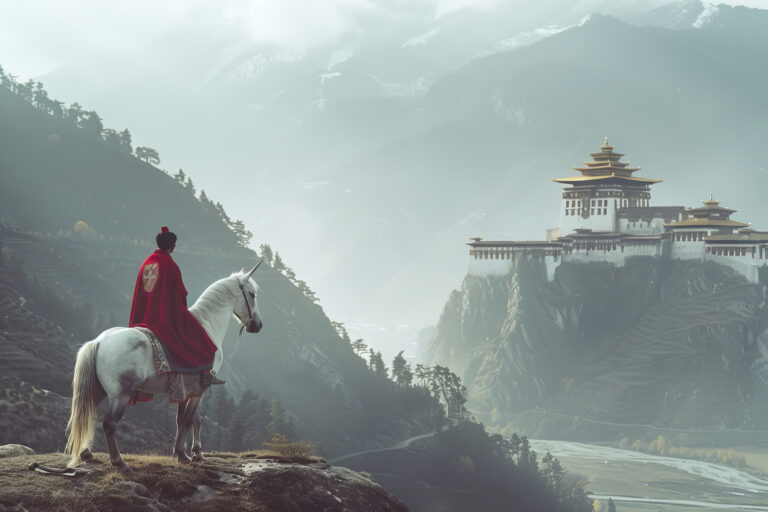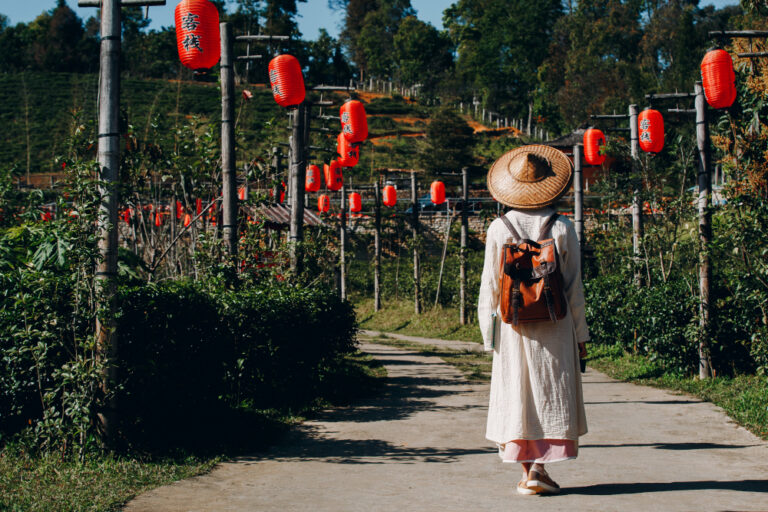Taiwan Folklore
The Legends Of Taiwan
Taiwan is rich in folklore, parables, tales, and mythologies, each with significant cultural and religious values. These stories highlight well-known landmarks and legends, setting Taiwanese culture apart from others.
Most of these stories have been passed down orally through generations, leading to slight variations. Over time, efforts have been made to document and share them online to preserve Taiwanese history. They have also been translated into English and other languages, making them accessible and celebrated worldwide. Here are three of the most popular stories:

The Legend of Sun-Moon Lake
The tale begins with the Taiwan Shao tribe, who led a peaceful and joyful life. They sustained themselves through hunting, fishing, and farming. One day, the sun disappeared from the sky, forcing them to work by moonlight. Soon, the moon also vanished, leaving the tribe in darkness. Their crops, animals, and fish depended on the sun and moon, so they were frightened and confused.

A Search Begins
Two tribe members decided to search for the sun and moon, believing they had fallen into a valley. They traveled across the island, over mountains and lakes, but couldn't find them. Eventually, they noticed a glowing lake in the distance. Upon closer inspection, they discovered that two dragons had taken the sun and moon to play with.

The Elderly Woman's Quest
An elderly woman appeared from a cave and sent them on a quest to find golden scissors and a golden axe to defeat the dragons. The couple traveled to Ali Mountain and dug for three days until they found the treasure. They returned and threw the weapons at the dragons, cutting off one of the dragon's heads and filling the river with blood. The sun and moon floated on top.
The Final Challenge
The elderly woman advised them:
“You must eat the dragons’ eyeballs to gain the strength and grow tall enough to place the sun and moon back in the sky.”
The couple ate the eyeballs and turned into giants. They tried to throw the sun and moon into the sky, but they wouldn’t stay up. So, they placed the sun and moon on the tallest palm trees. Eventually, the sun and moon returned to their normal rotations, and the crops grew back, and the animals returned.
The Legend of Muddy River
The Mazu Pilgrimage is a major religious event honoring Mazu, the sea goddess, and protector of fishermen and sailors. Thousands of devotees participate in this annual pilgrimage, which involves carrying a statue of Mazu on a journey across various temples. The event includes parades, performances, and traditional rituals, showcasing deep-rooted cultural and religious traditions.
A Leopard and a Rabbit
One day, while working, he saw a leopard running through his field holding a rabbit. Wanting to save the rabbit, he hit the leopard over the head with a hoe. The man then took the time to nurture and heal the rabbit back to health.
A Magical Seed
One day, while tending the field, he developed a big hunger and said out loud, “I wish I had some sweet fruit to eat.” He heard a voice say:
“I’ll give you a seed which you shall plant in the ground. It will grow the sweet fruit which you desire all over the mountain.”
The Woman's Help
A woman appeared and gave him the seed. She stayed with him, doing chores around the house to earn her keep. The fruit grew, and they lived happily together. One day, the woman disappeared, and he couldn’t find her anywhere. He heard someone sobbing nearby, saying she had been kidnapped and taken to the mountain.
The Rescue
He ran to the lake, and a fruit fell down, cracked in half, and turned into a bridge. He ran across it into the mountain. Through the mountain, he met a man who gave him a basket and an axe. He came across a house and heard her crying inside. Using the axe, he broke open the house door.
The Final Battle
The bad guys came after him with weapons. He hid nearby with the lady, and the old man he had met said to the men, “He went down the ratten.” The men began to chop down the ratten and accidentally fell into the river. They struggled in the river, turning the water muddy, which is why the river was renamed ZhuoShu Xi, meaning Muddy Water River in English.
The Aboriginal Hero
The TaiYa tribe lived in serenity, leading a pleasant lifestyle through hunting, fishing, and farming. When Taiwan was under Japanese rule for thirty years, they endured tough conditions. The Atayal tribe, in particular, suffered greatly under the harsh rule of the Japanese. Eventually, this tribe revolted and fought for their freedom, resulting in many lost lives.
The Wu-She Incident
This famous “Wu-She” incident inspired many Taiwanese to stand up against Japanese rule. A wedding ceremony was being prepared, and Chief Mo Na Dao and his son went to help the family with the celebrations. While they were setting up, a Japanese policeman appeared. Fearing that the policeman would ruin the wedding, Mo Na Dao’s son tried to be friendly and invited the policeman to stay. However, in the process, he smeared blood from his hands onto the man’s shirt.
The Conflict
This angered the policeman, who slapped the son’s face, sparking a fistfight between them. The policeman threatened to inform the Japanese troops and stormed out of the house. A teacher named Hua Gong, who witnessed the event, said:
“We have no weapons which will defeat their guns and bombs. But we have tolerated enough misery under their rule.”
The Revolt
Many Taiwanese tribes grouped together to perform an attack during a school athletic event. One of the aborigines ran up to the Japanese general and sliced off his head. At that precise moment, another group of aborigines rushed the police station. Since the police had no warning, they were unable to defend themselves. The tribes continued to kill and capture all the Japanese in the Wu She area, seizing all their weapons.
The Final Stand
During the battle, a Japanese commander threatened the tribe with poisonous gas, but they refused to surrender. Mo Na Dao declared:
“I would rather kill myself than die at the hands of the Japanese.”
Mo Na Dao shot himself with a handgun, and the rest of the TaiYa tribe followed. This story motivated Taiwan to battle against the Japanese for their land.
More Tales and Myths From Taiwan
The Legend of the Eight Immortals
The Eight Immortals are legendary figures in Chinese mythology, revered in Taiwan. Each immortal possesses unique powers and abilities. They are known for crossing the sea using their individual skills. The immortals’ adventures showcase their triumph over evil forces. These stories highlight moral lessons and cultural values. The immortals are often depicted in art and literature, symbolizing longevity and prosperity. Their tale inspires many cultural festivals and rituals in Taiwan.
The Story of Meng Jiangnu
Meng Jiangnu’s story is a tragic love tale with deep cultural roots. Her husband was conscripted to build the Great Wall of China. After his death, Meng Jiangnu’s tears brought down a section of the wall. This revealed his body, showcasing her unwavering love. The tale underscores themes of loyalty and sacrifice. It resonates deeply in Taiwanese culture and is retold in various forms. Statues and memorials commemorate Meng Jiangnu’s enduring legacy.
The Legend of the Peach Blossom Spring
The Peach Blossom Spring is a utopian legend symbolizing harmony. It describes a hidden village, discovered only by chance. People in the village live in perfect harmony with nature. This tale emphasizes the beauty of simplicity and peace. It has inspired poets and artists for centuries. The story remains a symbol of an ideal world. Taiwanese culture celebrates this legend through literature and art, reflecting a longing for peace.
The Tale of the White Snake
The White Snake is a beloved supernatural romance. It tells of a love affair between a human and a snake spirit. The story includes themes of love, betrayal, and redemption. Various supernatural elements enrich the tale. The legend is celebrated in operas and festivals. Its themes of love and sacrifice resonate deeply. It has been adapted into many forms of art and literature in Taiwan. The White Snake remains a cultural icon.
The Legend of the Moon Festival
The Moon Festival legend explains the Mid-Autumn Festival’s origins. It centers on Chang’e, the moon goddess, who drank an elixir of immortality. She then fled to the moon, leaving her husband behind. This story is celebrated during the Mid-Autumn Festival. It highlights themes of love and longing. Families gather to admire the moon and share mooncakes. The legend emphasizes the importance of family unity. It remains a cherished cultural tradition in Taiwan.
The Story of the Jade Rabbit
The Jade Rabbit lives on the moon, pounding the elixir of life. This legend is closely tied to the Moon Festival. The rabbit’s tale symbolizes selflessness and dedication. It is often told during the Mid-Autumn Festival. Children and adults alike are fascinated by this story. It enhances the festival’s magical atmosphere. The Jade Rabbit is a beloved figure in Taiwanese folklore. Its story continues to inspire and delight people of all ages.
The Tale of the Seven Fairies
The Seven Fairies’ tale is a romantic legend involving divine love. Seven fairy sisters descend to earth to bathe in a river. A human man falls in love with one of the fairies. This leads to a complex love story with divine interventions. The tale underscores themes of love and fate. It is often depicted in art and literature. The story remains a popular cultural narrative in Taiwan. It continues to captivate audiences with its enchanting themes.
The Legend of General Yue Fei
General Yue Fei’s story is a historical legend of patriotism. He defended China against invaders with great loyalty and bravery. His tale is celebrated in Taiwanese culture. Yue Fei’s loyalty and courage are highlighted in various tales. Statues and monuments honor his legacy. The general’s story inspires many to uphold values of honor and duty. It is a significant part of Taiwan’s cultural heritage. The legend of Yue Fei continues to be a symbol of heroism.
The Story of the Heavenly Dog Eating the Sun
The Heavenly Dog myth explains solar eclipses. It is believed a heavenly dog attempts to eat the sun, causing the eclipse. Rituals are performed to scare the dog away. This restores the sun’s light. The story involves loud noises and drum beating. It is a fascinating part of Taiwanese folklore. The tale highlights cultural explanations for natural phenomena. It remains a vibrant part of festival celebrations. The Heavenly Dog myth captivates with its vivid imagery.
The Legend of the Goddess Mazu
Mazu, the sea goddess, is revered by fishermen and sailors. Her legend involves numerous miracles, such as saving ships during storms. Mazu protects people from dangers at sea. She is celebrated in temples and festivals throughout Taiwan. Her story symbolizes safety and blessings for those at sea. Mazu’s legend is deeply ingrained in Taiwanese culture. Statues and shrines honor her across the island. The goddess’s tale continues to inspire faith and devotion.
What is the core of Taiwan’s folklore?
Taiwan’s folklore blends Austronesian indigenous myths, Sinitic tales, and influences from Japanese and Dutch colonial periods. Stories feature gods like Mazu, the sea goddess, and creatures like the Qilin, reflecting nature, spirituality, and cultural diversity.
What are some famous Taiwanese folk tales?
The Legend of Sun-Moon Lake (Shao tribe) tells of a couple sacrificing to save the sun and moon. The Atayal’s flood myth emphasizes environmental respect. The Tigress Witch story warns of shape-shifting animals.
Where can I experience Taiwanese folklore?
Visit Taipei’s Longshan Temple to see Mazu worship, or explore Alishan for legends like the Lake of the Sisters. The Taiwan Folklore Park in Taichung showcases stories through exhibits and performances.
How does folklore influence modern Taiwanese culture?
Folklore shapes festivals like the Mazu Pilgrimage and Ghost Month rituals. It inspires art, films like The Tag-Along, and conservation efforts, embedding moral values and cultural identity.
Are there resources to learn more about Taiwan’s folklore?
Check Island Folklore (islandfolklore.com) for stories and history. The Taiwan Tongzhi Hotline offers cultural workshops, and Academia Sinica’s digital archives provide detailed myth collections.

We write rarely, but only the best content.
Please check your email for a confirmation email.
Only once you've confirmed your email will you be subscribed to our newsletter.




